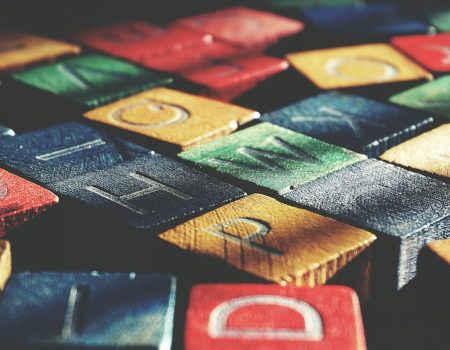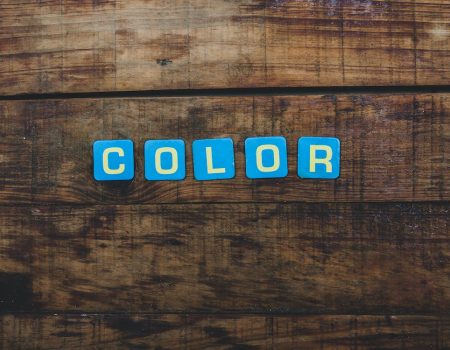The Basics Of Kerning

To understand kerning, you need to understand what it is first. First of all, kerning refers to the adjustment of the spacing between two specific characters in a font. Understandably, it is used to ensure proper legibility of the text and to achieve a visually pleasing design. Furthermore, the concept of kerning is typically applied to pairs of letters such as A and V, or T and Y, where the standard spacing can cause awkward gaps or overlaps.
How is kerning done then?
Well, kerning is achieved by manually adjusting the distance between two characters in a font. Therefore, the process typically involves reducing the space between the two characters to create a consistent and balanced appearance. So, in short, the goal of kerning is to create a seamless visual flow that draws the reader’s eye across the text while avoiding any awkward or distracting gaps.
Overall, kerning is an essential aspect of typography and design. Crucially, proper kerning can elevate the appearance of a text-based asset and help convey the intended message in a clear and visually appealing way.
The Importance Of Kerning In Typography

Well, the importance of kerning is easy to understand as kerning can have a big impact on the overall readability and visual appeal of a design. Therefore, proper kerning can help prevent unnecessary spacing between letters. Even avoiding collisions between letters. Even ensuring that the text flows smoothly and cohesively. More importantly, playing a crucial role in creating a balanced and harmonious composition. Understandably, inconsistent spacing can create distractions for the reader.
Additionally, kerning plays an important role in branding. You might not think so but it does. For example to help a company’s name or logo stand out and be easily recognizable. Designers and typographers who pay close attention to kerning demonstrate a commitment to precision. More so respecting the craft of typography, ultimately leading to better communication and a more satisfying reading experience.
Techniques Of Effective Kerning
Like we said, kerning is the process of adjusting the spacing between letters in typography to achieve a more aesthetically pleasing result. Now we need to look into techniques of kerning. I have picked 6 techniques to consider. Just so you get it right.
Here are some techniques to improve your kerning:
- 1. First of all, use optical kerning rather than relying on automatic algorithms.
- 2. Secondly, look for letter combinations that create awkward spacing, such as W+H or L+O, and adjust accordingly.
- 3. Third thing, pay attention to the rhythm of your typeface, and adjust kerning between letters as necessary to create a consistent flow.
- 4. When working with small type, use tighter kerning to keep the text readable.
- 5. Remember, to be sure to test your kerning at different sizes and on various devices to ensure consistency.
- 6. Lastly, use a grid to help you adjust the spacing between letters in a precise and consistent manner.
By carefully considering the spacing between letters and making thoughtful adjustments, you can improve the overall legibility and visual impact of your typography.
Common Mistakes To Avoid In Kerning
Understandably, people make mistakes when thinking and understanding kerning. For instance, some of the common mistakes to avoid in kerning include:
Most of all, over-kerning. By saying that I mean, overly tight spacing that reduces legibility.
Second most common mistake is, inconsistent kerning. By that I mean, uneven spacing between different letters or words.
Third really bad kerning mistake is, bad combinations. Let’s face it, some letters that just don’t look good together. Like combining red and pink in an outfit.
Lastly, forgetting to kern altogether. Surprisingly it’s not uncommon to leave default spacing that may not be optimal for your text.
To avoid these common mistakes, it’s crucial to take your time. Paying close attention to the details of your typography. For example, use your eyes and your judgment to fine-tune the spacing between individual letters. Easy right? In short, do always test your text at different sizes and resolutions to ensure it looks good in various contexts.
Tools For Perfecting Kerning

Fortunately, there are several tools available for perfecting kerning.
One popular tool is Adobe InDesign, which offers a variety of kerning options. Even a text wrap feature that allows for more precise spacing. Another option is FontLab Studio, which is specifically designed for editing fonts and includes a kerning mode. Online tools like Kernkraft and Typegenius also offer kerning assistance.
Ultimately, the best approach to kerning is a balance between using automated tools and relying on your own eye and judgment. Experiment with different techniques and tools to find the method that works best for you and your specific design needs.
Impact On Readability
Proper kerning (the role of typography) can help letters to flow together more seamlessly. More so, making it easier for readers to recognize letterforms and words at a glance.
Conversely, poor kerning can have the opposite effect, making text more difficult to read. Letters that are too far apart can create unintended spaces, breaks and visual separation between words.
For example, letters that are too close together can create visual overlaps. Making it harder to distinguish between different letters.
In short, effective kerning plays an important role in making text more readable. However, unbalanced or poorly executed it can detract from the overall readability. To better understand kerning and the impact on readability, read the beginners guide
The Role Of Kerning In Visual Hierarchy

So, visual hierarchy is crucial. Therefore, when neglected, text may appear disjointed and difficult to read. Visually not very attractive and sometimes makes a text not eligible. After all, consistent kerning ensures that the spacing between letters is balanced and harmonious. Also facilitating the flow of reading. One aspect is that kerning can be used to create visual distinctions between words or phrases. As a result, making them stand out on a page. In this way, kerning becomes an essential element in creating visual hierarchy.
Most of all and important to understand is that kerning plays a critical role in creating a structured text layout. Making it easier to alter the pace and flow of reading.
Wrapping Up
In conclusion, kerning is an essential aspect of typography that can make a significant difference in the legibility and appearance of a text. Therefore, correct kerning helps to avoid spacing issues that can cause unwanted gaps and word spacing problems. Which can result in a text that is difficult to read.
Now you hopefully understand that kerning is essential in all aspects of typography. Stretching from print to digital media. Relied on by designers to visually enhance the text. However, it’s not a magic solution to all typography problems. But more so undoubtedly a critical tool that requires skill and precision from designers.
Understanding kerning and its role in typography is a valuable skill for anyone working within the design industry. With accurate kerning, typography can become a powerful tool that can convey a message more effectively and efficiently.
